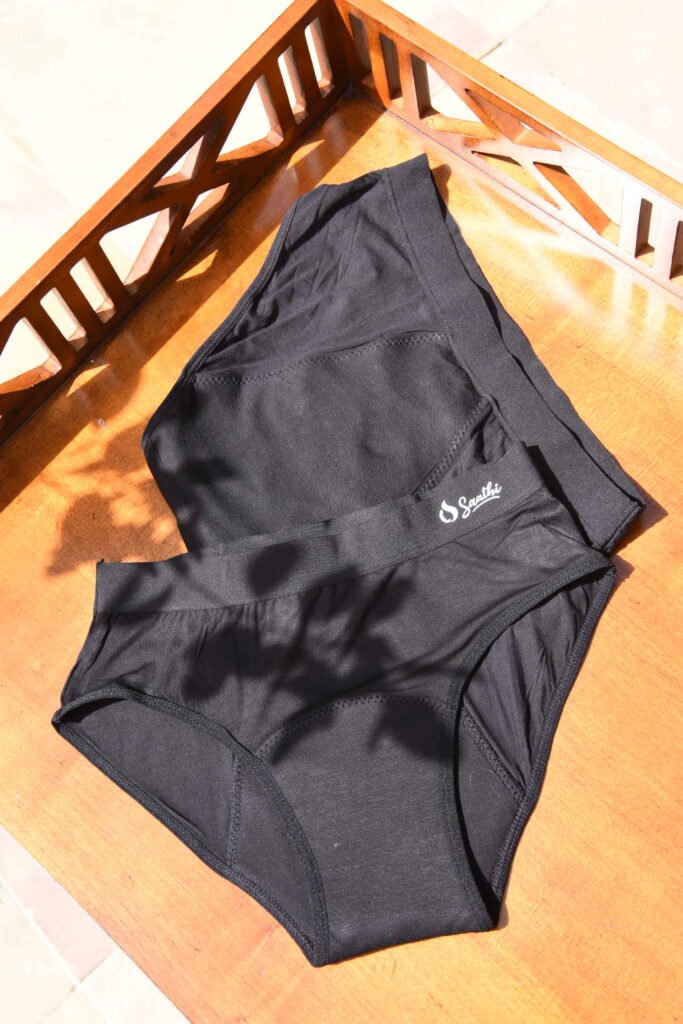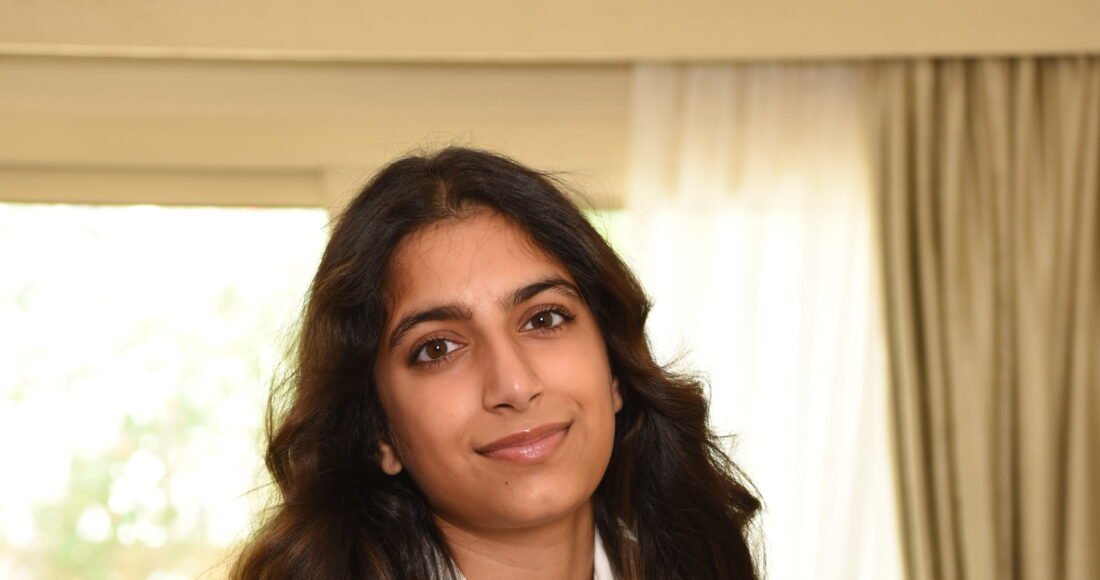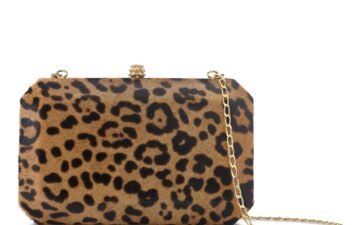Interview with Ahana Kotibhaskar Young Entrepreneur / founder of Saathi
Ahana Kotibhaskar, aged 16 from Wycombe Abbey School UK, has just launched ‘Saathi’ – a menstrual underwear company that gives back. The company is dedicated to providing comfortable and reliable menstrual solutions to women across the world while also making a positive impact on the humanity. For every underwear sold, one is donated to a woman in need.
1. What inspired you to start Saathi?
In my Summer vacations in 2022, my family visited our ancestral family home in a village in India, in the state of Maharashtra. We spent the day there and while chatting with some of the girls in the village, I realised that many of them stopped attending school because of the uneconomic and general unavailability or lack of menstruation products. In fact, I was told that, in several such villages, girls have to spend the duration of their periods in ‘period huts’, because it is considered ‘dirty’.
This really shocked me as these girls were around my age; some of them were even younger. After this revelation, I realized I had to do something. After discussing with my family and researching on the internet, I was horrified to read that 23 million girls in India alone drop out of school annually due to lack of sanitary products and hygiene facilities. I knew I had to make a change, and that’s how Saathi was born.
The idea originally started with me wanting to donate menstrual hygiene products, but after reading about how many girls there are who drop out of school, I decided to create a business, knowing that this way I could help more and more girls in an ongoing way.
2. What inspired you to start your own business at such a young age?
At a very young age, I would come up with various business ideas to make some pocket money. I wrote and published a book when I was 9 about a foster child and the money, received by the publisher from book sales, was sent to an NGO. During Covid-19, I raised money for charity (US$10k) by completing a triathlon with my brother in April 2020.At my primary school in Dubai, we used to have an entrepreneur’s club of which I was a very active member. Furthermore, my first years of boarding I made pocket money selling pot noodles to my friends.
So, entrepreneurship, initiative with a cause and making money has been innate in me. However, I realized that my past experiences of raising funds, for causes I believed in, were short term and mostly one-time in nature. To make an ongoing impact and to make it sustainable, I thought a business might better serve my other aim of longevity in giving while creating a positive change to society along while ensuring minimising waste via a sustainable product. Saathi, I hope, will help me and like-minded customers achieve these goals simultaneously.
3. How did you come up with the idea for your product?
As earlier stated, the initial idea was to donate regular sanitary products. However, most of these are single use, and a lot of the reusable ones are quite uncomfortable or tricky to use. So, the criteria for my product was to make it reusable, comfortable and easy to use. Period panties were the perfect solution to the problem.
Essentially, it is an underwear with what I would call a ‘built in pad’. All you have to do is wear it like regular underwear, rinse it, and then wash it in the washing machine or hand wash (for those in rural villages). I think this product really is a boon to adolescent girls, womenkind really, and is truly an amazing product that isn’t marketed well globally.
Buying sanitary pads aren’t very economical, and they are considered quite embarrassing in rural India. With this in mind, I wanted to make our Saathi panties affordable in comparison to other menstrual products, with the goal of allowing customers to purchase Saathi underwear’s as regular products, as well as ensuring that nobody feels ashamed or has to miss school due to their period.
One of the biggest challenges women and girls in rural India and many other poorer countries face is the shame behind having your period. It is considered embarrassing to buy sanitary pads and even more shameful to dispose them. What better way to combat both those issues than to use our period underwear! Our underwear can be used through day and night and does not require you to wear a sanitary pad. There is no disposal as these are reusable up to 18-24 months years, like a regular underwear. They are eco- friendly and most importantly comfortable, and I use them as well.
4. What challenges have you faced in launching and running Saathi?And What has been the response from the market so far?
Starting a socially responsible period underwear company has not been without its challenges. Some of the challenges I initially faced were:
- Social acceptance: With several period underwear brands in the market, it has been a challenge to break through the clutter of their advertisements, product placements and their heightened level of brand awareness. Additionally, I’ve had to bridge the gap and educate my target audience on why to choose my product as most are unaware about period poverty, which, for e.g., in rural India is a health hazard.
Many girls and women have to skip school or work because they don’t have menstrual solutions that are hygienic, safe and offer thorough protection from leaks. The sad truth is, that due to a lack of sanitary products, many women end up using unhygienic alternatives such as rags or scrap pieces of fabric. This leads to infections and sickness which are expensive to treat – especially seeing as they are in low-income areas. Lack of access to basic menstrual necessities is denying many females of a future.

- Finding a high quality, affordable yet sustainable supplier: I had to ensure that while I had a limited budget, there was no compromise on the quality and effectiveness. This involved intense research with several sample trials during boarding school days the UK and holidays in Dubai.
- Finding the right NGO partner: With numerous NGOs across Asia and the world, it was a hard task to find one that matched my values and had direct access to females who needed my products for their lives to be changed. I wanted to work with someone who had a successful track record and believed in women empowerment and supported my cause of eradicating period poverty.
- Patience: I’ve learnt to become more patient. I had thought of the idea a year back and at that moment in time, I never imagined that it would take me nearly a year to get my business off the ground from the initial stages of research, product development, partnering with an NGO and now brand building and marketing, I’ve come a full circle in launching my socially responsible business, Saathi…and we’ve just begun looking at the surface, let alone scratching it
- Budgeting: As a start-up, one has limited resources and learning to prioritise allocations has been a steep curve and the journey has only just started.
About the response this far, I have been working on the idea and concept right through my GCSE year and hence progress in terms of sales hasn’t been as quick and rapid as I would’ve liked. I have had to balance my entrepreneurial spirit with my academics & sports at school but with my exams ending by June, but I am quietly anticipating an uptick in social media marketing and hopefully sales.
5. What kind of support have you received from your family and friends along the way?
I am ever so grateful to both, my family and friends, for being the amazing people they are, having completely supported me in this journey. Whether it be my parents for encouraging me and giving me advice when I am at a crossroad, or even my friends for willingly listening and then helping test my products for feedback and further research. I have truly been surrounded by an incredibly supportive atmosphere.
6. How did you go about researching and developing your product?
I must admit, it was definitely a strenuous process. When I initially set out, I decided to create a list of what I wanted my product to be; comfortable, ethically made, eco-friendly, super absorbent, reusable, low maintenance and sustainably packaged. I am proud to say that after months of conversation, trials, development, the Saathi period panty has ticked off every item on my list. In the early days, I reached out to several manufacturers, inquiring as to how might we might make a product that checks all my requirements. After carefully and patiently testing a multitude of samples, I finally managed to find the perfect period panty. From then on, regarding the manufacturing of the product itself, it was much easier.
7. What strategies have you used to market and promote ‘Saathi’?
I am imploring to the world to recognize this gross injustice that exists with respect to pink tax on menstrual products. I believe our customers should resonate with my double strategy of A) buy 1 to give 1 to the underprivileged while B) reducing our customer’s impact on the environment, both at an affordable price for really good quality product.
Nowadays, like my family, most customers are concerned about the environment AND reducing the impact of disposal of one-time use sanitary products. This product tries to achieve this.
And perhaps the underlying thesis is that I am genuinely appealing to customer’s charitable side while touching the sustainability angle of protecting mother earth via their purchasing decisions.
8. How did you manage to achieve success at such a young age?
In my mind, we would be on the path to success if Saathi is available and accessible to rural areas and we see a change in their buying behavior towards period panty and hopefully Saathi.
My efforts so far are driven by an inclination to effect a change, and to make my own path, regardless of age. After all, if you don’t do something you want to do now, when will you ever do it? Honestly, I think we have only touched the tip of the iceberg and there is so much yet to be done. Any success that I have achieved is purely due to hard work, determination, as well as the incredible support I have received from my family.
However, I personally view success as to come in many various forms. Of course, there is the fact that we have had a wonderful response from our clientele, despite having only recently just launched, but we will have success in helping girls go to school, which for me, will be a real joy.
9. How do you plan to continue growing and expanding Saathi?
The aim is to make Saathi a real business that can sustain itself and accordingly, over the next 6-12 months, I hope we can extensively market the product and be able to promote the brand, not only on social media but help customers gain access to the product easily, either it be via web purchase, setting up easy online payments and make it available for sale on online portals such as Amazon, Flipkart and others.
As a frequent user of social media and such portals, I think Saathi could sufficiently grow to support the charitable endeavour that underlies the business. My parents taught me to take baby steps in any new situation and so I intend to grow slowly but firmly.
10. What are your long term goals for Saathi and what are you looking to do next?
My ultimate goal is to make a period positive impact for girls worldwide. I believe every girl should have access to safe, sustainable and affordable period products and menstrual education, regardless of where she lives. With this in mind, I hope to educate and expand my product reach to needy markets worldwide eventually.
To achieve this, my aim is to partner with various NGO’s globally to end period poverty and promote Saathi as the sustainable period underwear.









